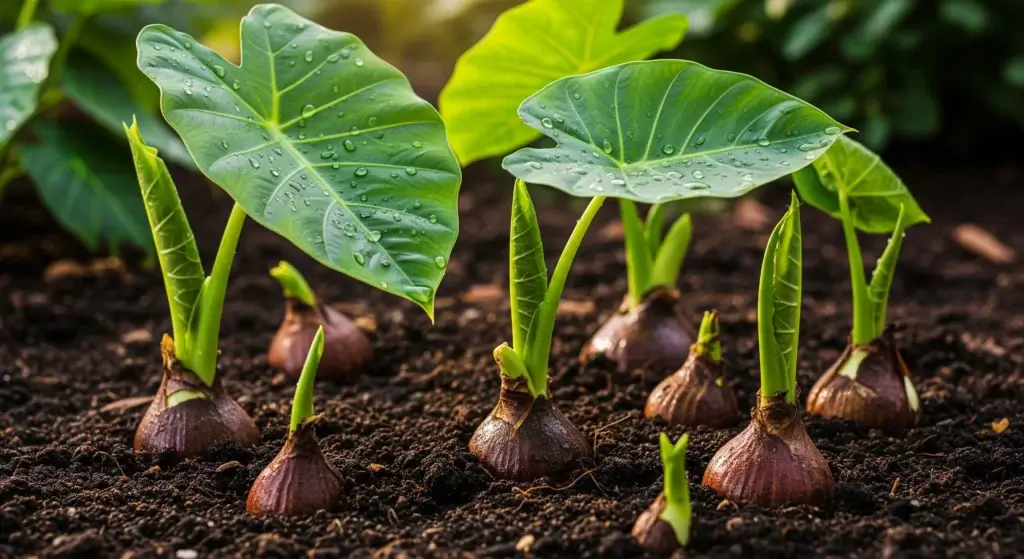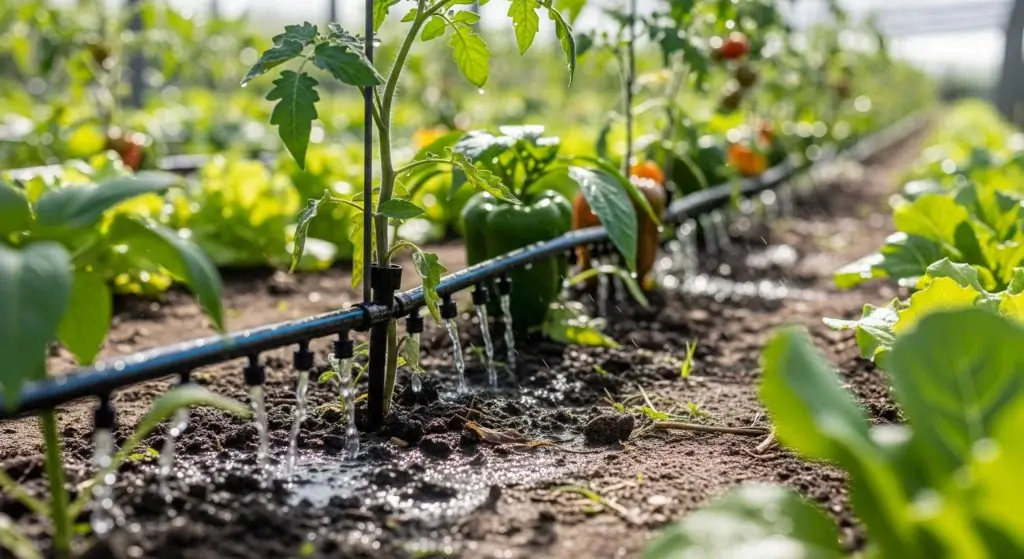
Wilting potted plants can be a frustrating and disheartening experience for any gardener.
Whether it’s due to underwatering, overwatering, lack of sunlight, pests, disease, or nutrient deficiency, there are several common causes that can lead to a plant’s decline.
In this article, we’ll explore the most common causes of wilting, how to identify each cause, and provide a step-by-step guide on how to revive your wilting potted plants.
Common Causes of Wilting
Before we dive into the revitalization steps, it’s essential to understand the common causes of wilting in potted plants.
Here are some of the most common reasons:
Underwatering
When plants don’t receive an adequate amount of water, their soil becomes dry, leading to dehydration.
Symptoms include a parched soil surface and leaves that become crispy and curl inward.
Underwatered plants are often visibly droopy and may appear limp.
- Read also: DIY Plant Pots Ideas: A Creative Guide to Enhancing Your Garden
- Read also: DIY Ideas: Perfect Outdoor Potted Plant Watering System
Overwatering
Conversely, overwatering can drown plant roots and suffocate them by depriving them of oxygen.
Soggy soil is a telltale sign, accompanied by yellowing leaves and potentially the presence of fungus gnats.
Overwatered plants may exhibit wilting due to root rot and nutrient leaching.
Lack of sunlight
Plants require sunlight for photosynthesis, the process by which they convert light energy into chemical energy to fuel growth.
Insufficient sunlight can result in stretched stems, leggy growth, and pale leaves.
Without proper light exposure, plants may struggle to produce sufficient energy to sustain themselves, leading to wilting.
Temperature extremes
Fluctuations in temperature, both hot and cold, can adversely affect plant health.
High temperatures can cause leaves to scorch and wilt, while cold drafts can induce drooping and damage.
Maintaining stable temperatures within the optimal range for your plant species is crucial to prevent wilting due to temperature stress.
Pests or diseases
Pests and diseases can wreak havoc on plants, causing wilting and other symptoms.
Keep an eye out for physical signs such as insects, webbing, or unusual spots on leaves.
Identifying and promptly addressing pest or disease infestations is essential to prevent further damage and restore plant health.
Nutrient deficiency
Plants require various essential nutrients for proper growth and function.
A deficiency in nutrients such as nitrogen, phosphorus, or potassium can manifest as wilting, yellowing, or pale leaves.
Conducting a soil test can help determine any nutrient deficiencies and guide appropriate fertilization strategies to remedy the issue.

Revitalization Steps
Once you’ve pinpointed the cause of your plant’s wilting, it’s crucial to take prompt action to revive it.
Here’s a detailed guide for addressing each potential issue:
Underwatering
- Step 1: Thoroughly water the plant until you see water draining out of the bottom of the pot. This ensures that the roots receive adequate moisture.
- Step 2: Allow the top inch of soil to dry out between waterings to prevent overwatering and root rot.
Overwatering
- Step 1: Carefully remove the plant from its pot and allow excess water to drain completely.
- Step 2: Repot the plant in fresh, well-draining soil to prevent waterlogged conditions.
- Step 3: Water the plant sparingly until it shows signs of recovery, ensuring that the soil doesn’t become soggy again.
Insufficient light
- Step 1: Assess the current location of the plant and move it to a brighter spot with indirect sunlight if possible.
- Step 2: If natural light is limited, consider supplementing with artificial grow lights to provide the necessary light intensity for healthy growth.
Temperature extremes
- Step 1: Evaluate the plant’s surroundings and relocate it to a more suitable environment that avoids extreme temperature fluctuations, drafts, or direct heat sources.
- Step 2: Maintain a consistent temperature range that is optimal for the particular plant species.
Pests or diseases
- Step 1: Carefully inspect the plant for any signs of pests or diseases, such as unusual spots, holes in leaves, or visible insects.
- Step 2: Identify the specific problem and treat it accordingly using natural or organic methods whenever possible.
- Step 3: Consult reliable gardening resources or seek advice from local experts to ensure effective treatment and prevention strategies.
Nutrient deficiency
- Step 1: Assess the overall health of the plant and look for symptoms of nutrient deficiency, such as yellowing leaves or stunted growth.
- Step 2: Provide appropriate fertilization or nutrient supplements to replenish the missing nutrients and support healthy growth.
- Step 3: Adjust the fertilization schedule according to the plant’s needs and monitor its response to ensure proper nourishment.

General Care Tips for Reviving Plants
When your potted plants start to wilt, it’s essential to take immediate action to revive them.
Alongside specific steps tailored to each plant’s needs, here are some general care tips to ensure their recovery:
Increase humidity
Boosting humidity around your plants can work wonders for their revival.
You can achieve this by placing a humidifier nearby or creating a simple pebble tray.
Simply fill a shallow tray with water and place pebbles or stones in it.
As the water evaporates, it creates a humid microclimate around the plant, providing the moisture it needs to thrive.
Avoid fertilizing
While your plant is in a stressed state, it’s best to refrain from fertilizing.
Fertilizers contain nutrients that may further stress the plant’s already weakened condition.
Instead, focus on providing optimal growing conditions through proper watering, light exposure, and humidity levels.
Prune dead or damaged leaves
Removing dead or damaged leaves is essential for encouraging new growth and revitalizing your plant.
Use clean, sharp pruning shears to trim away any unhealthy foliage, making sure to cut at an angle to promote healing.
Be mindful not to over-prune, as this can add additional stress to the plant.
Patience is key
Recovery is a gradual process and may take some time, depending on the severity of the plant’s condition.
Be patient and continue to provide consistent care, monitoring the plant’s progress along the way.
With time and proper attention, your wilted plants will bounce back to their former glory.

- Read also: Unlock Lush Growth: Tips for Caring for Succulents Indoor
- Read also: The Ultimate Guide to Growing Thriving Broccoli in Pots
Conclusion
Reviving a wilting potted plant requires patience, attention to detail, and a willingness to identify and address the underlying cause.
By following the step-by-step guides outlined in this article, you can help your plant recover and thrive.
Remember to increase humidity, avoid fertilizing while stressed, prune away dead leaves, and be patient. With these tips and a little TLC, your wilting plant can regain its health and beauty.



